"Through the Eyes of the Piping Plovers"
A plover exhibition is the first for a new museum on the shores of Lake Michigan.
Last week, in a visit to Waukegan, I found myself viewing a plover nest with eggs up close. It was something I had never done through seven seasons of monitoring, filming, and writing about Piping Plovers. That’s because a plover nest—really just a subtle depression in the sand—is always in a precarious position. Even seasoned plover monitors never set foot near one. In fact, the whole point is to keep people far, far away from the birds and their eggs.
Here is the catch about the nest in Waukegan: it was a facsimile developed as part of a new exhibition, “Through the Eyes of the Piping Plovers,” at the stunning new Waukegan History Museum at 1 North Sheridan Road in downtown Waukegan, Illinois. The eggs were 3D-printed and the rocks and sand were arranged to resemble an actual nest that belonged to local plovers Pepper and Blaze.
Such is the level of detail in the exhibition, which primarily features the watercolors of artist Heeyoung Kim and the Brushwood Botanical Artists affiliated with the Brushwood Center in Riverwoods. The artworks depict the flora and fauna of the lake plain, the ecosystem that is home to Piping Plovers and many other shorebirds. The plovers are shown as well many other species like Buff-breasted Sandpiper, Semipalmated Plover, Solitary Sandpiper, and Whimbrel. Flora include Dogbane, New England Aster, and Missouri River Willow. A poignant piece by Edith Harte, “Protected But Not Protected,” shows the plovers’ beach with an array of threats from people to dogs to hawks, with a backdrop of Waukegan and the bluff that separates the town from the lake. A work by Elizabeth Plotnick shows the “Piping Plover menu” of tiny clams, snails, sowbugs, and worms.
The exhibition was carefully curated by Carolyn Lueck to stay true to the plovers’ story—and recent nesting success in Waukegan—while featuring many aspects of life on the beach. Lueck also serves as the President of the Lake County Audubon Society and the leader of plover monitors as part of the Sharing Our Shore-Waukegan (SOS-W) initiative. In addition to the exhibition, she has created a documentary film about the birds and even provided overnight lodging for the Great Lakes Piping Plover Conservation Team when they came to town last summer. SOS-W was created as a response to a pair of plovers that attempted to nest in a gravel car-park at the Waukegan Municipal Beach in 2018. That pair went on to be named Monty and Rose when they landed in Chicago a year later. “We knew after Monty and Rose in 2018 we had to do better,” Lueck says.
“The genesis of Waukegan is the lakefront,” says Bryan Escobar, the curator of the Waukegan History Museum at the Carnegie.
The permanent exhibitions at the newly renovated site chronicle Waukegan history dating to the Ice Age. There is evidence of Marquette and Jolliet landing on the lakeshore in the 1600s, and the story of how the town started as Little Fort under British rule before changing to the Indigenous name Waukegan and evolving as a site for industry. The mouth of the Waukegan River is where factories attracted immigrant laborers from Croatia, Finland, Slovenia, and Sweden.
The new museum is in the former Waukegan Public Library building, established in 1903. The library was a Carnegie library, one of thousands funded by the industrialist Andrew Carnegie around the turn of the 20th century. The building, poised on a Lake Michigan bluff downtown, had fallen into disrepair before talk of rehabbing it began in 2018. A few years later, construction was under way, and the meticulously restored structure opened in May of this year.
A prominent space features the book collection of Waukegan’s Ray Bradbury, the celebrated author who once spent many hours in the library as a youth. The wood-paneled walls are lined with Bradbury’s books in glass cases. I checked for bird books and though I didn’t find any, there were works on all sorts of other topics (one on cats stands out).
Escobar guided me through the expansive lower level, which features an array of artifacts from Waukegan’s social and industrial history, including an old marquee from the Genesee Theatre. The city has served as inspiration for naming Piping Plovers, with Genesee, Ray (for Bradbury), Jack (for Jack Benny), and Dandelion (for Bradbury’s novel Dandelion Wine) the names of captive-reared birds from this past summer.
This visit for me was full of pleasant surprises. I have been to Waukegan on and off since 2019, and the town increasingly has embraced the plovers (they were named the city’s official bird species in 2024). If every coastal town embraced plovers like Waukegan has, this endangered species might just reclaim even more Great Lakes beaches.
Through the Eyes of the Piping Plovers will be open through October 31. The museum’s hours are Wednesday through Friday, 11 a.m.–4 p.m., and Saturday, 11 a.m.-3 p.m. The location is ADA accessible, and the museum is just uphill from the Union Pacific North / Metra train station. Free parking is available in Municipal Lot F and metered street parking was available on the day I visited.
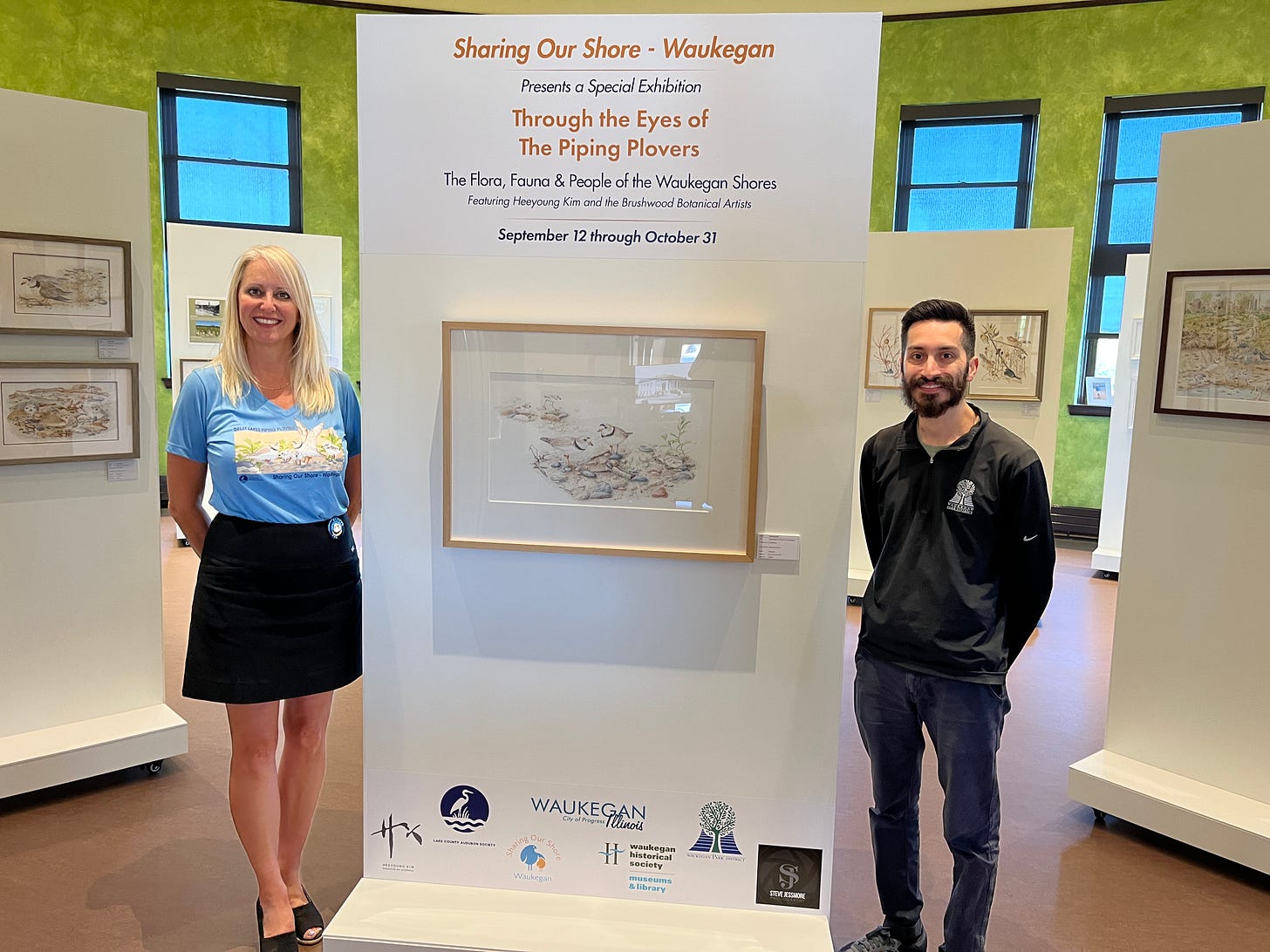
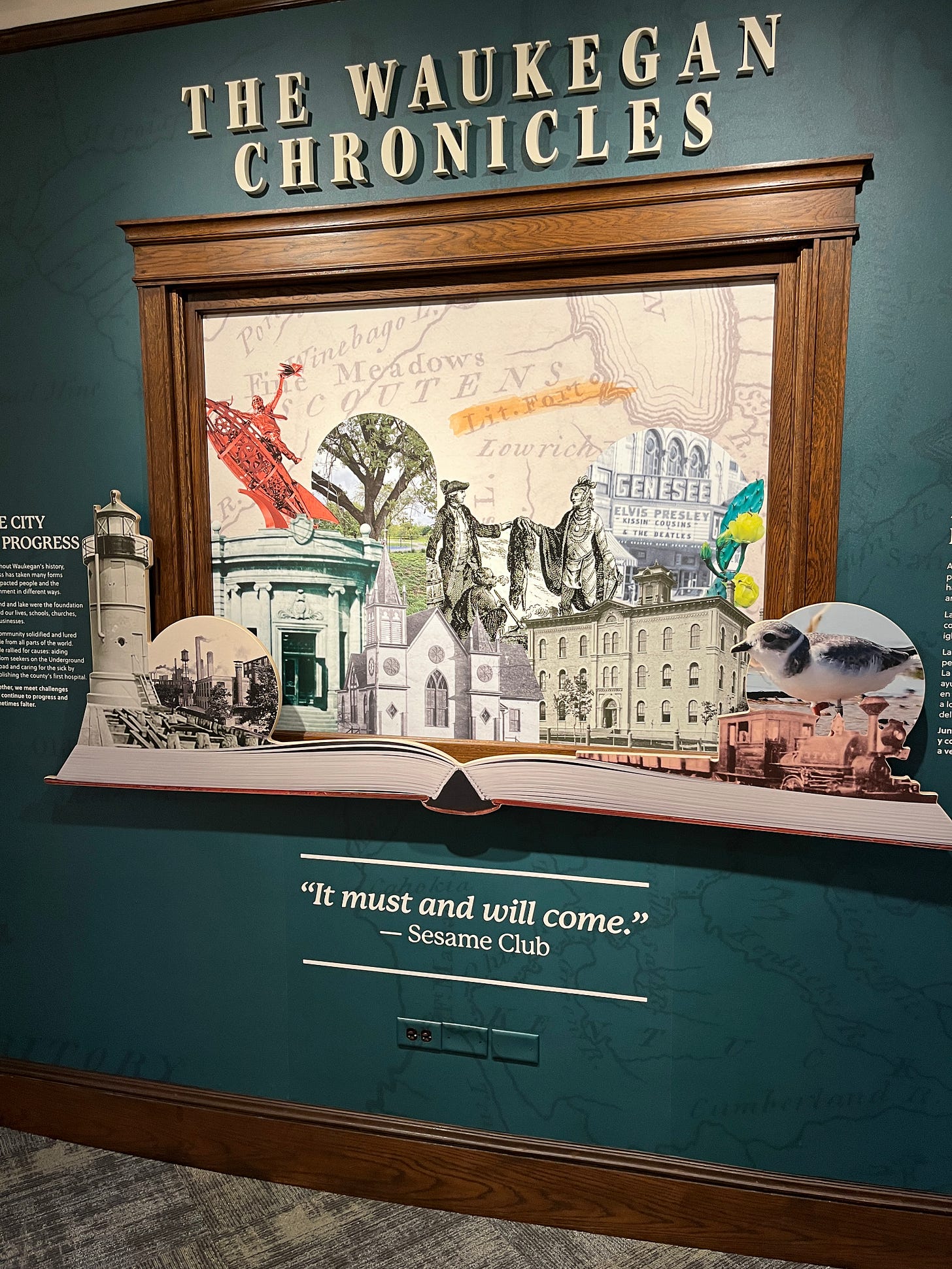
If you appreciate my posts, leave a comment or hit the like button. Every bit of engagement helps more readers find my work.



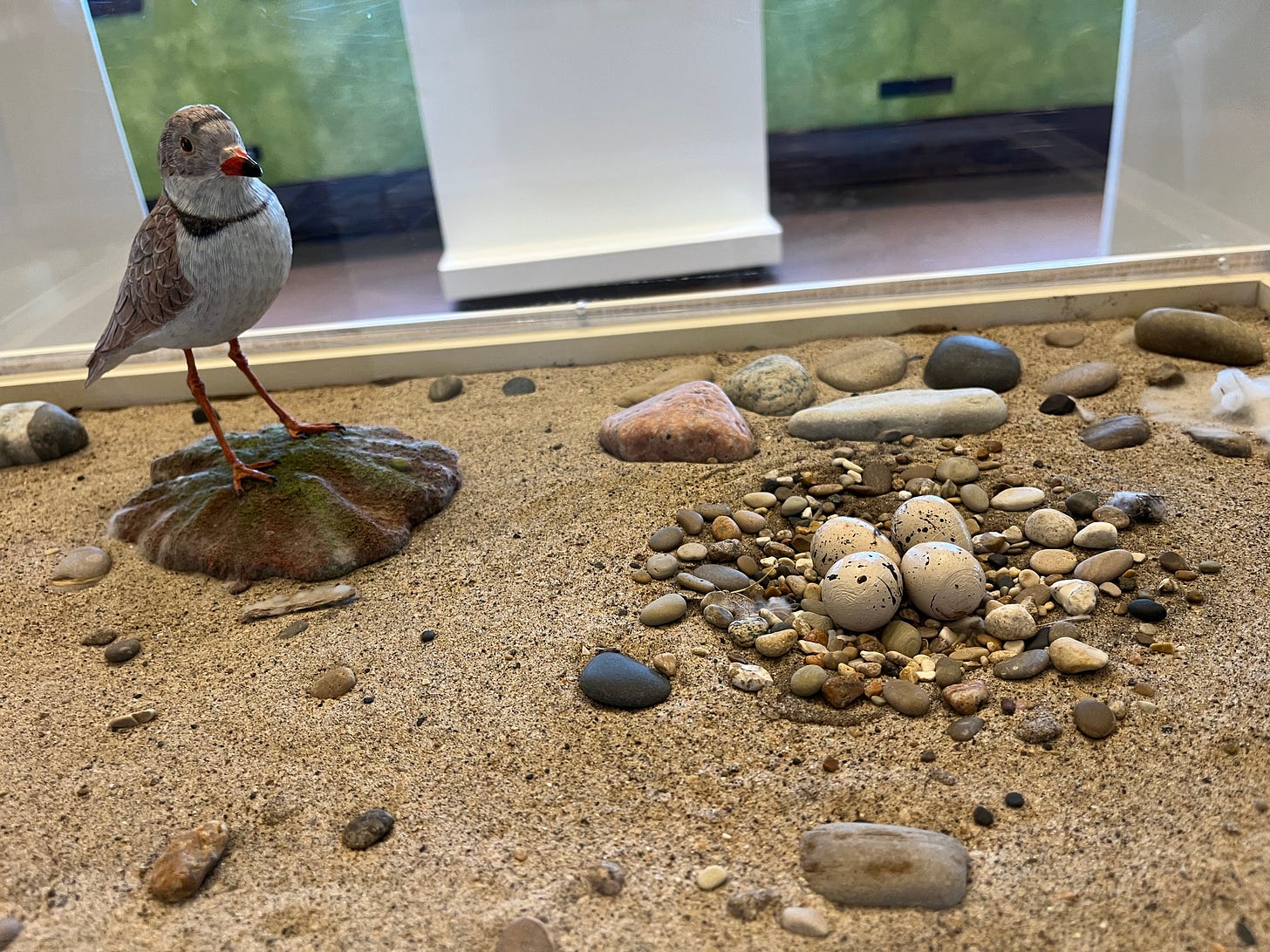
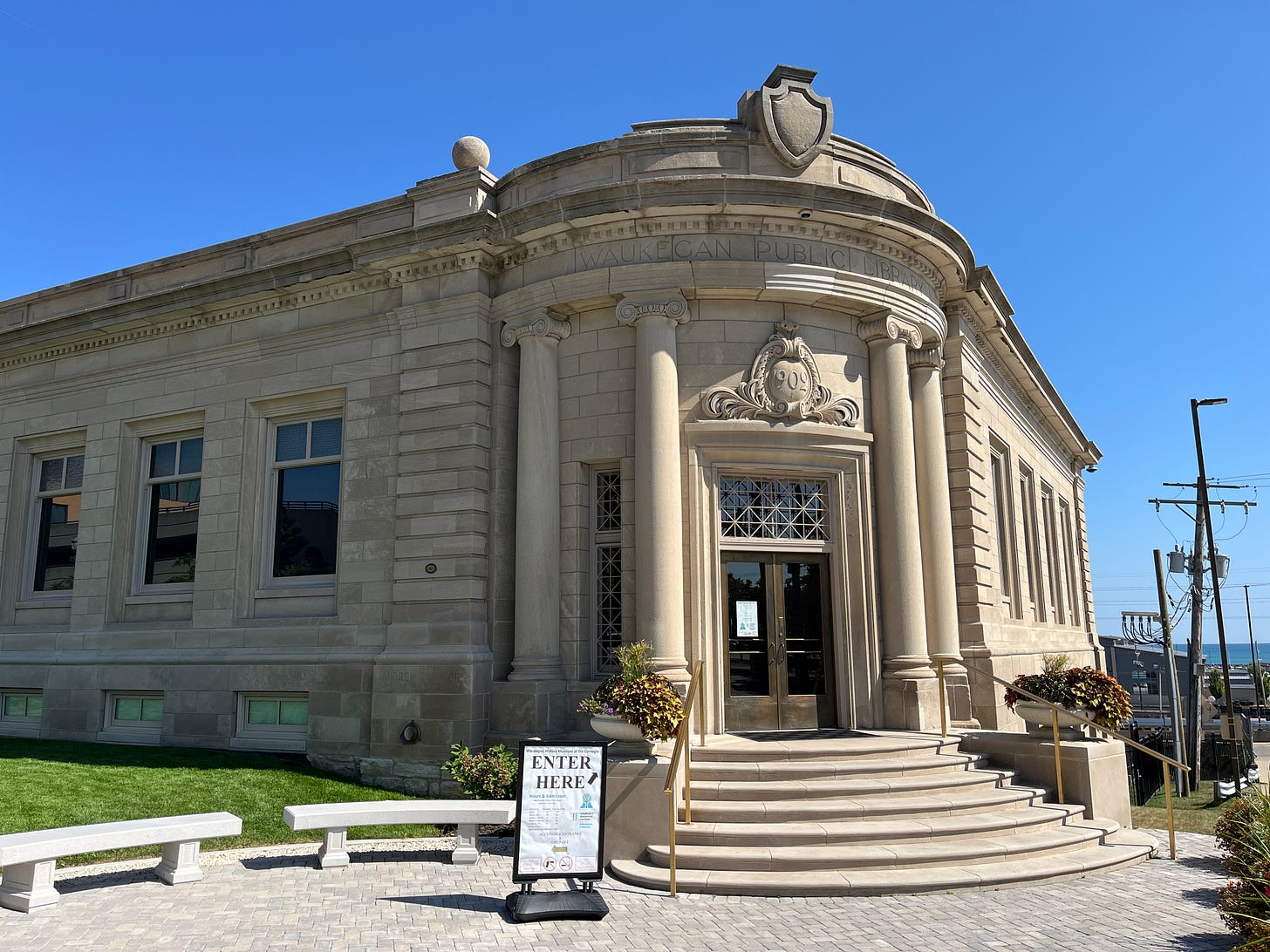
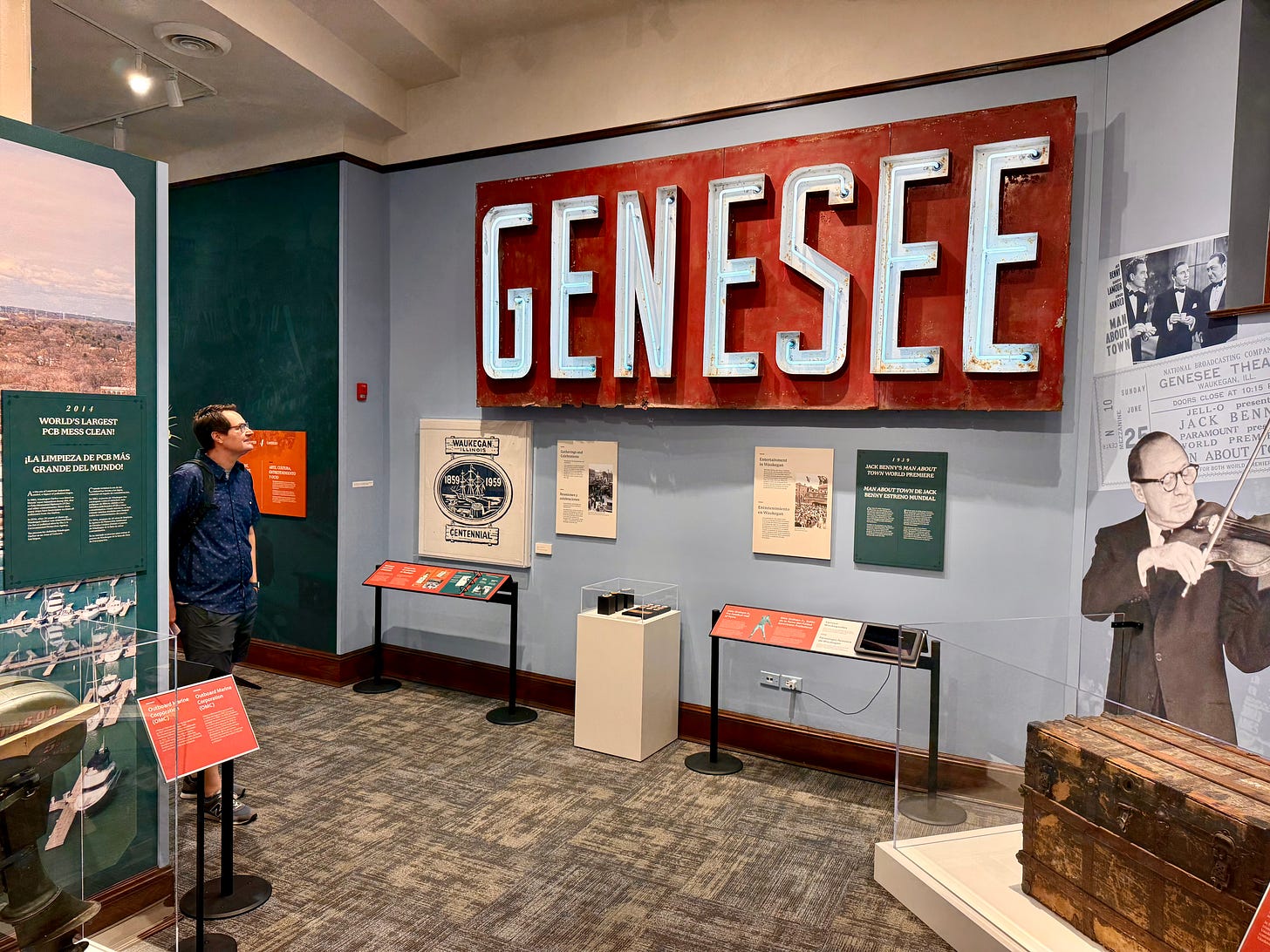
How wonderful that these tiny shore birds have the strength and stamina to fight their way back from near extinction - with our help, of course - captivating our hearts with their drive and courage. What an honor that they merit the first exhibition of a new museum on the shores of our great Lake Michigan. God bless them and all who have made this possible.
What a beautiful building! The more people become aware of wildlife the more they will protect it. And who couldn’t love the plovers!